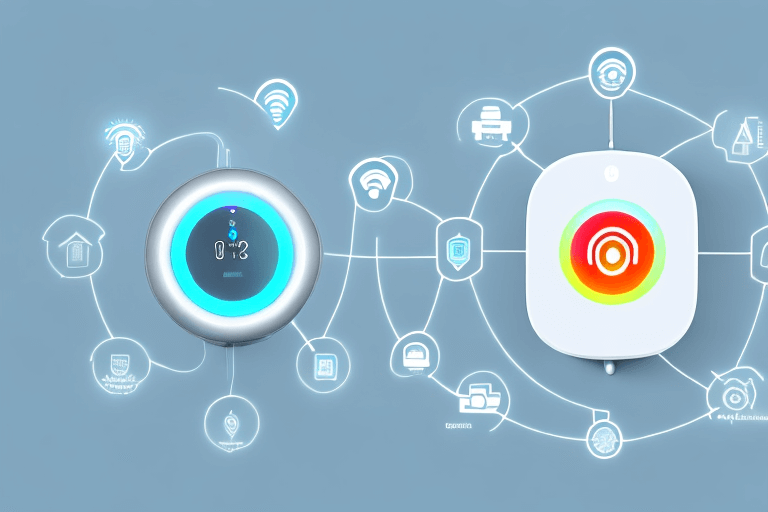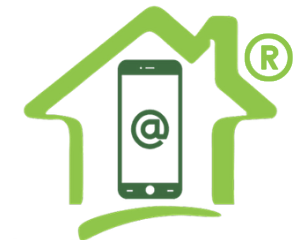Basic Starter Wi-Fi Enabled
- Up to 3 BHK Flat basic setup
- Smart light control automation
- Ac control automation
- Tv control automation
- Google voice or alexa integration
Premium
- Up to 3 BHK Flat basic setup
- Smart light control automation
- Ac control automation
- Tv control automation
- Google voice or alexa integration
Platinum
- Up to 3 BHK Flat basic setup
- Smart light control automation
- Ac control automation
- Tv control automation
- Google voice or alexa integration

Discover the latest trends and innovations in smart home automation with our comprehensive service, fill the below form to get call back from our dedicated team.
The Ultimate Solution to Smart Home Automation
Smart home automation is revolutionizing the way we live by integrating advanced technologies into our everyday lives. With the increasing availability and affordability of smart devices, setting up a smart home has become easier than ever before. In this comprehensive guide, we will explore the various aspects of smart home automation, including its definition, benefits, components, setup process, advanced features, and troubleshooting common issues.
Understanding Smart Home Automation
Smart home automation refers to the use of interconnected devices and systems within a home to enhance convenience, security, and energy efficiency. These devices are capable of communicating with each other and can be controlled remotely, either through a smartphone app or voice commands. This technology enables homeowners to automate various tasks and functions, making their lives easier and more convenient.
What is Smart Home Automation?
At its core, smart home automation involves connecting everyday devices and appliances to a central system that can be controlled and monitored remotely. This system, often referred to as a hub or a smart home controller, serves as the brain of the setup, allowing users to manage and automate various aspects of their home from a single interface.
Imagine waking up in the morning and stepping into a perfectly tailored living environment. The temperature is just right, thanks to the smart thermostat that has learned your preferences over time. As you make your way to the kitchen, the aroma of freshly brewed coffee fills the air, courtesy of your smart coffee maker that started brewing at the exact time you programmed it to. You walk into the living room, and the blinds automatically open, letting in the gentle morning sunlight. All of this is made possible by the seamless integration of devices through smart home automation.
By integrating devices such as thermostats, lighting systems, security cameras, and entertainment systems, smart home automation provides homeowners with unparalleled control over their living environment. With just a few taps on a smartphone or a voice command, users can adjust the temperature, turn off lights, lock doors, and even play their favorite music throughout the house.
The Benefits of Smart Home Automation
One of the main benefits of smart home automation is the convenience it offers. With the ability to control multiple devices from a centralized system, homeowners can streamline their daily routines and eliminate the need for manual operation. Imagine waking up to a house that has already adjusted the temperature, brewed fresh coffee, and opened the blinds.
But convenience is just the tip of the iceberg. Smart home automation also brings enhanced security to homeowners. Integrated security systems allow homeowners to monitor their property remotely and receive real-time alerts in case of any unusual activity. From surveillance cameras to smart locks, these systems provide an added layer of protection and peace of mind.
Imagine going on a vacation and being able to check the security cameras in real-time, ensuring that your home is safe and secure. With smart home automation, you can remotely lock doors, set up motion sensors, and receive notifications if any unexpected activity is detected. This level of control and awareness allows homeowners to have peace of mind, knowing that their home is protected even when they are away.
Furthermore, smart home automation offers significant energy efficiency benefits. With the ability to monitor and control energy-consuming devices, homeowners can optimize their energy usage and reduce their carbon footprint. For example, smart thermostats can learn your schedule and adjust the temperature accordingly, ensuring that energy is not wasted when you are not at home. By intelligently managing lighting systems and appliances, smart home automation helps homeowners save on energy bills while contributing to a greener future.
In conclusion, smart home automation is revolutionizing the way we live, offering convenience, security, and energy efficiency. By connecting devices and systems within a home, homeowners can enjoy seamless control over their living environment, making their lives easier and more comfortable. With the added benefits of enhanced security and energy efficiency, smart home automation is undoubtedly the way forward for modern living.
The Components of a Smart Home
Smart Devices and Their Functions
A smart home consists of various interconnected devices that enable automation and control. These devices can be categorized into several functional areas:
- Lighting: Smart lighting systems allow users to control the brightness, color, and scheduling of their lights. This not only enhances convenience but also contributes to energy savings.
- Heating, Ventilation, and Air Conditioning (HVAC): Smart thermostats enable users to remotely control their home’s temperature and create custom schedules. This results in optimal comfort and energy efficiency.
- Security: Smart security systems include surveillance cameras, smart locks, and motion sensors. These devices offer advanced monitoring and control options, ensuring the safety and security of the home.
- Entertainment: Smart entertainment systems allow users to stream music, videos, and other media throughout their homes. Integration with voice assistants and streaming services makes for a seamless entertainment experience.
- Appliances: From smart refrigerators to washing machines, a range of household appliances can be connected to a smart home network. This allows for remote monitoring and control, optimizing functionality and energy consumption.
The Role of AI in Smart Homes
Artificial Intelligence (AI) plays a crucial role in smart home automation. With AI-powered voice assistants like Amazon Alexa and Google Assistant, users can control and automate their smart devices through voice commands. These assistants can perform a wide range of tasks, from adjusting the thermostat to ordering groceries, making our lives more convenient and efficient.
AI algorithms also enable advanced features such as predictive analytics and personalized automation. By analyzing data from various sensors and devices, AI systems can anticipate the user’s needs and automatically adjust settings accordingly. For example, a smart home equipped with AI can learn your preferred temperature settings and adjust them accordingly throughout the day, without any manual intervention.
Setting Up Your Smart Home
Choosing the Right Smart Home System
When setting up a smart home, it’s essential to choose the right smart home system that meets your specific needs and requirements. There are several factors to consider, including:
- Compatibility: Ensure that the smart home system you choose is compatible with the devices you already own or plan to add to your setup.
- Scalability: Consider the expandability of the system. Will it allow you to add more devices and functionalities in the future?
- Integration: Look for a system that provides seamless integration with popular voice assistants, such as Amazon Alexa or Google Assistant.
- User Interface: A user-friendly interface is crucial for effortless control and management of your smart home system. Ensure that the interface is intuitive and easy to navigate.
Installation and Setup Process
Once you have selected the appropriate smart home system, the next step is installation and setup. While the specific process may vary depending on the system and devices you are using, here are some general steps:
- Set up the central hub or controller by following the manufacturer’s instructions.
- Connect your smart devices to the hub or controller, either using Wi-Fi, Bluetooth, or other compatible protocols.
- Install the corresponding smartphone app on your mobile device and connect it to the central hub.
- Configure the settings and preferences for each device, such as room assignments, schedules, and automation rules.
- Perform thorough testing to ensure that all devices are connected and functioning correctly.
Advanced Features of Smart Home Automation
Voice Control and Recognition
One of the most popular features of smart home automation is voice control. Voice assistants, such as Amazon Alexa and Google Assistant, allow users to control their smart devices by simply speaking commands. Whether it’s adjusting the lighting, playing music, or checking the weather, voice control adds convenience and hands-free operation to the smart home experience.
With advancements in natural language processing and machine learning, voice recognition systems have become more accurate and responsive. These systems can understand and interpret complex commands and provide personalized responses based on individual preferences. For example, you can ask your voice assistant to “dim the lights in the living room” or “set the thermostat to 72 degrees,” and it will understand and execute the commands accordingly.
Energy Efficiency and Savings
Smart home automation not only enhances convenience but also promotes energy efficiency and savings. By intelligently managing lighting, heating, cooling, and other electrical systems, smart homes can optimize energy consumption based on occupancy and usage patterns.
For example, smart lighting systems can automatically turn off lights in unoccupied rooms or dim them when natural light is sufficient. Smart thermostats can adjust temperature settings based on occupancy, time of day, and outside weather conditions, maximizing energy efficiency without sacrificing comfort.
Troubleshooting Common Smart Home Issues
Connectivity Problems and Solutions
One common issue in smart home automation is connectivity problems. Sometimes, devices may fail to connect to the central hub or lose their connection intermittently. To troubleshoot connectivity issues, try the following steps:
- Check the Wi-Fi signal strength in the area where the device is operating. Weak signals may cause intermittent connection issues.
- Move the device closer to the central hub to improve signal strength.
- Restart the central hub or router to reset the connection.
- Ensure that the device and the central hub are using the same Wi-Fi network and password.
- Update the firmware of the devices and the central hub to the latest versions.
Device Compatibility Issues
Device compatibility is another potential problem in smart home automation. Different devices may use different communication protocols, and not all devices are compatible with each other. To address device compatibility issues:
- Choose devices that are compatible with the smart home system you are using.
- Research and ensure that the devices you plan to integrate into your smart home setup work seamlessly together.
- Consult the manufacturer’s compatibility guide or customer support for any known compatibility issues.
- If compatibility issues persist, consider using a bridge or hub that acts as a translator between incompatible devices.
In conclusion, smart home automation offers a wide range of benefits, from convenience and security to energy efficiency and savings. By understanding the components of a smart home, choosing the right system, and leveraging advanced features, homeowners can create a personalized and efficient living environment. While troubleshooting common issues may be necessary from time to time, the rewards of a fully automated smart home make it an investment worth considering.
